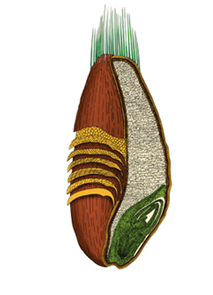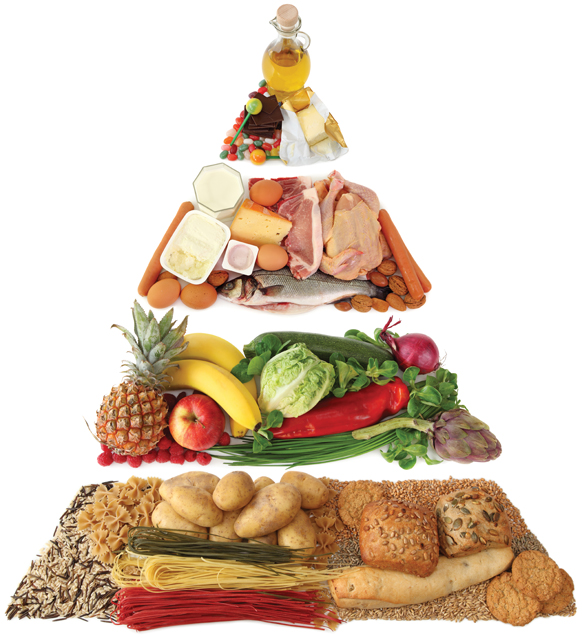Bulgur is a pre-cooked, tasty and a healthy food product which is produced from wheat and water and does not contain any colourings or artificial flavours.
Bulgur is produced by cleaning, boiling and drying the wheat and then, after removing its peel and classifying it according to grain sizes, grinding it in a range of different mills.
Many people enjoy bulgur in the dish Tabouleeh as well as a healthy alternative to rice and pasta. Click here to see recipes.
Types of Wheat
Wheat comprises of three sections; the core, bran and endosperm. Most of the nutritional components are found in the core and bran which contain minerals such as zinc, magnesium and chrome; diet sediment, some phenols, phytates and selenium as well as all B vitamins except B12. The endosperm is the section of wheat that gives energy.

The Bulgur Difference
Generally products made of wheat have the micronutrients in the core and bran sections separated during wheat processing leaving only the endosperm or the section that provides energy. In contrast, bulgur can be defined as a full grain because wheat is not grinded during the bulgur production and as a result a product higher in protein, vitamin, mineral, and diet sediment is obtained.
Bulgur has a glycemic index that is lower than macaroni and rice and is suitable for diabetic patients.
Bulgur is high in fibre. According to World Health Organization, the RDI of fibre is between 25-30 grams and this can be obtained by having one serving of bulgur.
B1 vitamins play a significant role in strengthening our nervous and digestive systems and should be consumed regularly in order to prevent a range of illnesses disease. Bulgur is high in B1 vitamins and contains folic acid that is important during pregnancy.
Nutritional Information
Nutritional experts divide nutrients into five key food groups. It is recommended that Grain 70% of our needs for energy and protein from healthy grains.
As shown in the table below, the nutritional value of bulgur is higher than other grains such as rice and macaroni. The amount of protein, calcium, potassium and phosphorus is higher in bulgur because key minerals and B vitamins are retained during the production process.
Bulgur contains bran and the type of bran in cracked wheat is not soluble in water. This prevents the increase in blood sugar and blood fat by decreasing the sugar and fat absorption. It helps avoid problems such as constipation and large intestine cancer caused by immobility by accelerating the activities of the digestive system.
The starch in wheat is gelatinized with precooking at the production stage and it gains a hard structure after drying and lasts longer. This precooking results in Duru Bulgur being easy to cook and digest.
Table 1A Nutritional Comparison - Wheat, Rice & Pasta
| Nutrition Facts | Bulgur (100g) | Rice (100g) | Pasta (100g) |
|---|---|---|---|
| Energy (cal) | 338 | 329 | 338 |
| Carbohydrate (g) | 70.2 | 74.0 | 71.4 |
| Protein (g) | 12.2 | 6.7 | 10 |
| Fat (g) | 0.86 | 0.70 | 1.40 |
| Fiber (lif) (g) | 8.2 | 3 | 5.2 |
| Potassium (mg) | 328.5 | 96.7 | 192.6 |
| Calcium (mg) | 14.8 | 3.7 | 12.2 |
| Phosphor (mg) | 226 | 99 | 121 |
| Iron (mg) | 1.30 | 0.60 | 1.60 |
| B1 Vitamin (mg) | 0.31 | 0.10 | 0.30 |
| B2 Vitamin (mg) | 0.07 | 0.02 | 0.04 |
| Cholesterol | 0 | 0 | 0 |
| Source: THE SCIENTIFIC AND TECHNOLOGICAL RESEARCH COUNCIL OF TURKEY | |||
Types of bulgur
Bulgur can be classified into three types according to the specification and the colour of the bulgur.
Yellow Bulgur: It is the most common variety of bulgur in the world. Yellowish colour is due to its raw material and durum wheat's natural colour.
Dark Bulgur: Dark bulgur is produced from red soft wheats such as bezostaja and golia. It is softer but has a stronger taste to the yellow bulgur.
Wholegrain Bulgur: Like yellow bulgur, it is produced from durum wheat but the shell of the wheat has been peeled less. As a result, it contains a higher amount of fibre compared to yellow bulgur.
